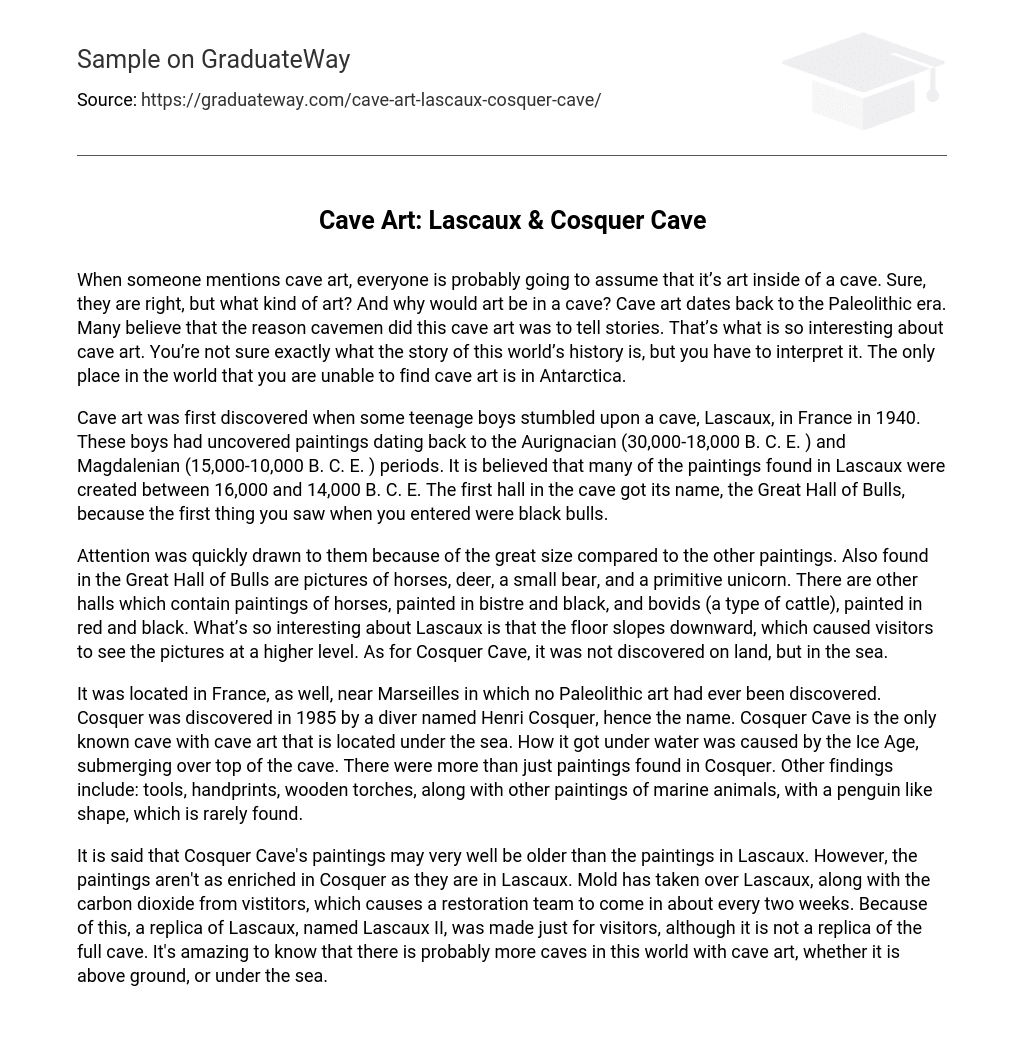The general understanding of cave art is that it refers to artwork found inside caves, raising inquiries about the nature and purpose of such art. This form of artistic expression dates back to the Paleolithic period and some believe it served as a means of storytelling by early humans. The captivating aspect of cave art lies in its ability to provide insights into our history, although the exact narratives are open to interpretation. It is worth mentioning that Antarctica remains the only location where no cave art has been discovered.
The cave Lascaux in France was discovered by teenagers in 1940. It houses ancient paintings from the Aurignacian and Magdalenian periods, estimated to be created between 16,000 and 14,000 B.C.E. The first hall inside the cave is called the Great Hall of Bulls due to its prominent depiction of black bulls upon entry.
In addition to their size, which stood out among the other paintings, the Great Hall of Bulls also features depictions of horses, deer, a small bear, and an early form of unicorn. Other chambers display paintings of horses in bistre and black, as well as bovids in red and black. One intriguing feature of Lascaux is its sloping floor that allows visitors to view the artwork from a higher perspective. In contrast, Cosquer Cave was not found on land but underwater.
Located near Marseilles in France, the Cosquer Cave was the site where no Paleolithic art had been found before. This cave, discovered in 1985 by a diver named Henri Cosquer, is unique as it is the only known cave art located underwater. The cave became submerged during the Ice Age, covering it with water. Alongside paintings, numerous other artifacts were also found in Cosquer. These included tools, handprints, wooden torches, and paintings of marine animals, including a rarely found penguin-like shape.
It is believed that the paintings in Cosquer Cave may be older than those in Lascaux. However, the paintings in Cosquer are not as abundant as those in Lascaux. Mold and carbon dioxide from visitors have taken over Lascaux, which requires a restoration team to visit every two weeks. As a result, a replica of Lascaux called Lascaux II was created specifically for visitors, although it does not replicate the entire cave. It is fascinating to consider the possibility of more caves in the world with cave art, whether they are above ground or underwater.





